The full name of "Cao Quan Stele" is "Han Heyang Order Cao Quan Stele", also known as "Cao Jing Wan Stele". Standing in October of the second year of Zhongping in the Eastern Han Dynasty (185), it is vertical, 273 cm high and 95 cm wide, with a total of 20 lines and 45 characters in each line. Unearthed in the old city of Hexian County, Shaanxi Province in the early years of Wanli in the Ming Dynasty, it was collected in Xi'an Forest of Steles Museum in 1956. The content is Wang Chang's account of Cao Quan's life. This stele is one of the representative works of the Han Dynasty stele, and it is also a typical example of the beautiful school of official script. Its structure and brushwork have reached the perfect state of Han Li, and it is the peak of Han Li. Wanjing of the Qing Dynasty commented on this stele: "It is beautiful and vivid, not restrained, not rushing, and it is also divine." "Cao Quan Stele" is one of the few works that are relatively well preserved and have relatively clear fonts among stone steles of the Han Dynasty in my country.
Official script is also called "official character" and "ancient script", which is based on seal script Above, a font produced to meet the needs of convenient writing. People simplified Xiaozhuan, and changed the even and round lines of Xiaozhuan into straight and square strokes to facilitate writing. This kind of font is created in the prison. It is divided into two types: "Qin Li" (also called "Gu Li") and "Han Li" (also called "Jin Li"). It can be said that the appearance of Li Shu is the ancient A major change in writing and calligraphy. The seven characters of Chinese characters include oracle bone inscriptions, bronze inscriptions, small seal script, official script, cursive script, regular script, and cursive script. The evolution of the official script has gone through 6,000 years, while the Han official script has played an important role and is still widely used today. The strokes of cursive script, regular script, and running script are also more common in the official script. Shadow, especially Wei Jin calligraphy. The writing in official script is slightly wide and flat, with long horizontal lines and short straight lines, with the rhyme of "silkworm head and swallow tail" and "twists and turns". It originated in the Qin Dynasty and reached its peak in the Eastern Han Dynasty. The appearance of official script was an important turning point in the history of the evolution of Chinese characters. By the time of the Eastern Han Dynasty, strokes such as cast, press, and dot were beautified as upward provocations, and the severity and setbacks were full of changes, which was quite artistic in calligraphy. The styles are also becoming more diversified, which is of great value for artistic appreciation, especially when the complex is simplified, the shape of the characters is changed from round to square, the strokes are changed from straight to straight, and "continuous strokes" are "broken strokes". The stele is the representative work of Hanli.
In a broad sense, all official scripts of the Han Dynasty are Han official scripts, including Han The early ancient Li, Han Li (Han Li in a narrow sense) and Ba Fen Shu. In a narrow sense, Hanli refers to the most widely used official script in the Western Han Dynasty. Hanli is more standardized than the ancient official script, and it is not as decorative as Bafen. It is a common script from the Western Han Dynasty to the end of the Han Dynasty.
Inscription overall
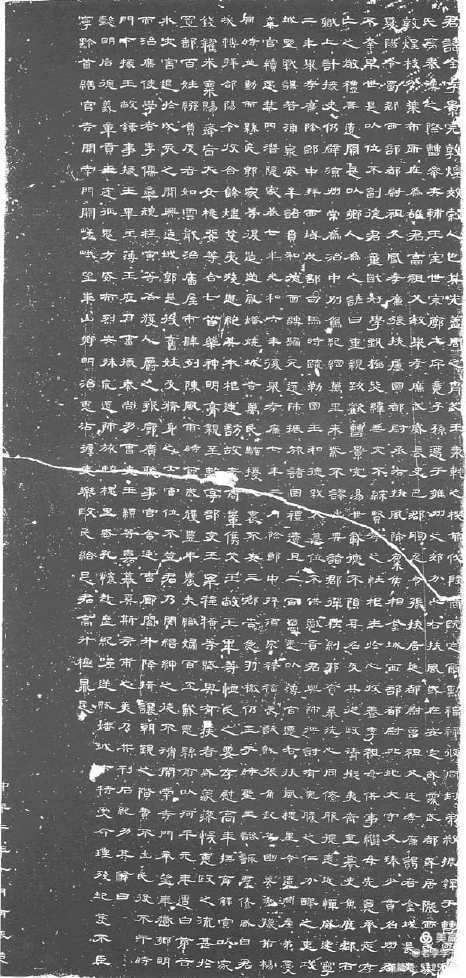
Below, I will present Cao Quanbei’s interpretation [traditional] for your convenience Understand the practice:
<full text>The king's taboo is complete, the characters are complete, and the Dunhuang Xiaogu people are also . It first covered Zhou's helmet. King Wu seized the opportunity to attack the Yin and Shang dynasties, established Erxun, Fulu Youtong, and granted his younger brother Shu Zhenduo to Cao Guo, because of his family.
The Qin and Han Dynasties. Cao Shen joined the royal family. Sejong Kuotu reprimanded him, and his descendants moved to the outskirts of Yongzhou, where they were separated from Youfufeng, either in Anding, or in Wudu, or in Longxi, or in Dunhuang. The branches and leaves are clothed, and the location is male.
Grandfather Min, Ju Xiaolian, Wuwei Changshi, Berkshire Qu Forbearance order, Zhangye Juyan Duwei. The great-grandfather said, Xiaolian, Ye Zhe, Jincheng Changshi. Xia Yang Ling. The captain of the western part of Shu County. Grandfather Feng, Xiaolian, captain of the state of Zhangye, prime minister of Fufeng, Mihou Xiang, captain of the west of Jincheng, prefect of the north, father, Shaoguan, famous prefecture, unfortunate early life, so the position is not worthy of virtue.
Jun Tong is eager to learn, very careful, and comprehensive. The nature of virtuous and filial piety is rooted in the heart. Adopting Ji's grandmother and serving the stepmother, the first will and the will, the respect of survival and death, the etiquette is complete. It is based on the proverb of the local people: "Cao Jingwan is happy to cherish relatives." The world has carried virtue, and its name will not die. And from the attack, Qing imitated Yiqi, and admired Shi Yu directly. The right post in the Li County, the history of the plan, still set up Liangzhou, often in the middle of the government, don't drive, the discipline is thousands of miles, the nobles are not wrong. From the various prefectures, he punishes the wrong, corrupts and cleanses the heart, his colleagues obey virtue, and fears the prestige far and near.
In the second year of Jianning, he promoted Xiaolian, eliminated doctors, and worshiped the Ministry of Western Regions Sima, King Hede of Shule at that time, killed his father and usurped the throne.
When there is (suck) pus kernel, share the benefit of mash. The siege of the city and the field battle, the strategy is like a spring, and the power is mobilized. Moved to the right husband Fenghuai Liling, was abandoned by his brother in the same birth, continued to be banned from the net, and hid in the alley for seven years.
In the sixth year of Guanghe, Xiaolian was restored, in March of the seventh year, except Doctor, thanks to Jiuquan Lufu Chang. The thief Zhang Jiao raised troops in Youji, Yanyu, Jingyang, and moved at the same time. However, the county residents Guo's family and others rebelled, burned the city temple, harassed all the people, and made people uneasy. The three counties are in a hurry, but Yuxi is still here. At that time, the Holy Lord consulted, and the group of bureaucrats said: "Your Majesty!" They turned to worship the Heyang Order, collected the embers, and cut off the roots of the barbarians. Then I visited the old elders to discuss, Junai Wang Chang, Wang Bi, etc., sympathized with the needs of the people, comforted the seniors, raised widows and widows, and bought rice millet with family money for blindness. The eldest daughter, Taoyu, etc., combined the seven medicines with Shenming ointment, and went to Liting personally. The ministers Wang Zai, Cheng Heng, etc., gave them to the sick, and they were cured by Xianmeng. Huizheng and his ilk are better than setting up postage. The common people bear the burden, and those who oppose it are like clouds. They rule the houses and display them in the shops. In the rainy season, the year will be a good year. Farmer and weaver, Dane, a hundred workers. The county, formerly known as the first year of Heping, was flooded by the Imperata Cottage and retreated. In Xuhai, the city was built. After that, the old surname and the self-cultivation of the people, the official position was not promoted, and the emperor was the disciple of Min Jinshen. He opened the gate of the South Temple, looked at Huayue, and ruled the country. The scholars Li Ru, Luan Gui, Cheng Yin, etc. Received the report of the nobleman. Kuo Guang listens to the official house, the Tingcao corridor is combined, and the steps of the pilgrimage are raised and lowered, which does not cost the people, and when the service is not done.
Wang Chang from the door, Wang Bi from the recorder, Wang Li from the master, Hucao Qin Qinshang, Gong Caoshi Wang Zhuan, etc., Jiamu Xisi and Kaofu's beauty are published together in Shi Jigong, and their words are:
After Yi Ming, De Yizhang. Tribute to the king's court and conquer ghosts. Webblie, An Shuhuang. Returning to the teacher's journey, Linhuaili. Feeling grateful, go to the funeral. Sigh rebellious thief, burnt the city. Specially ordered, unreasonable. If you are not a minister, you will rather be the head of Guizhou. Shanguan Temple, open the south gate. Que Saga, Wang Huashan. Township Meiji, Hui Zhanwo. The officials are happy to govern, and the people are well supplied. Jun Gaosheng, extremely full. (End of the full text)
Bright version enlargement


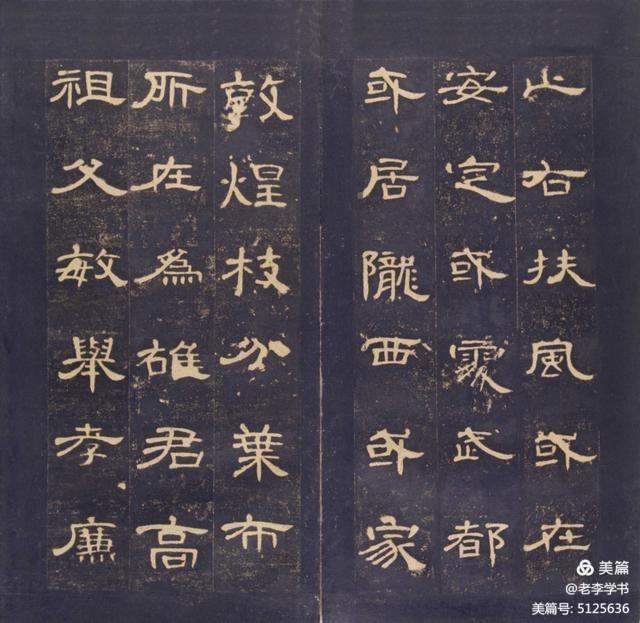
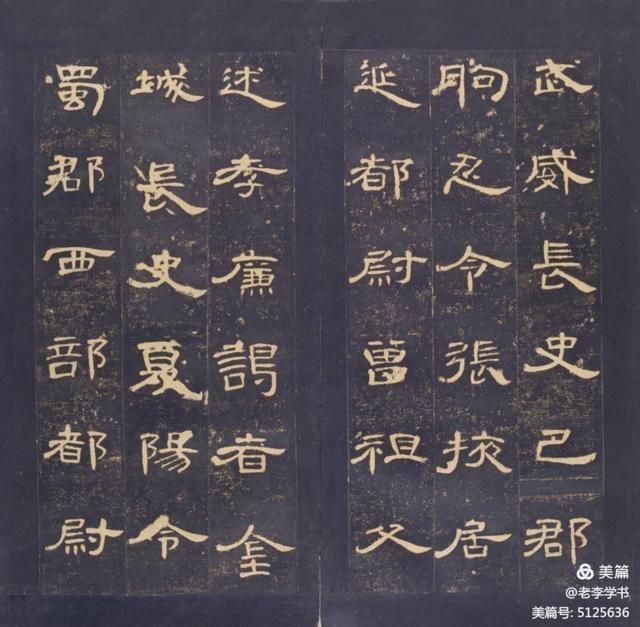
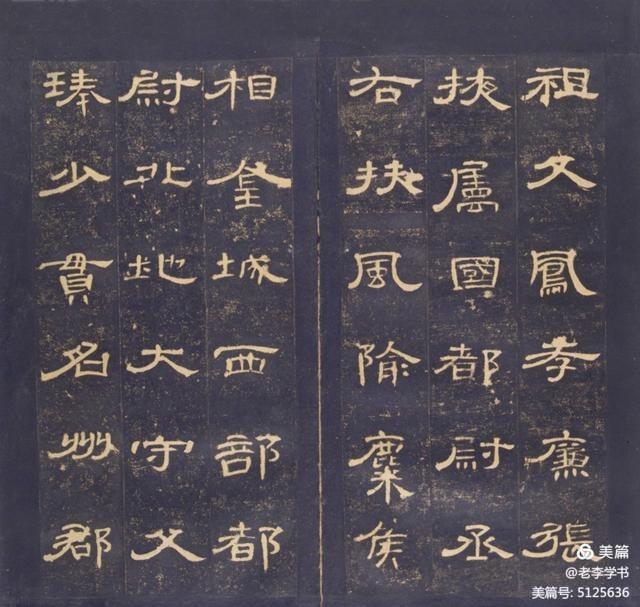
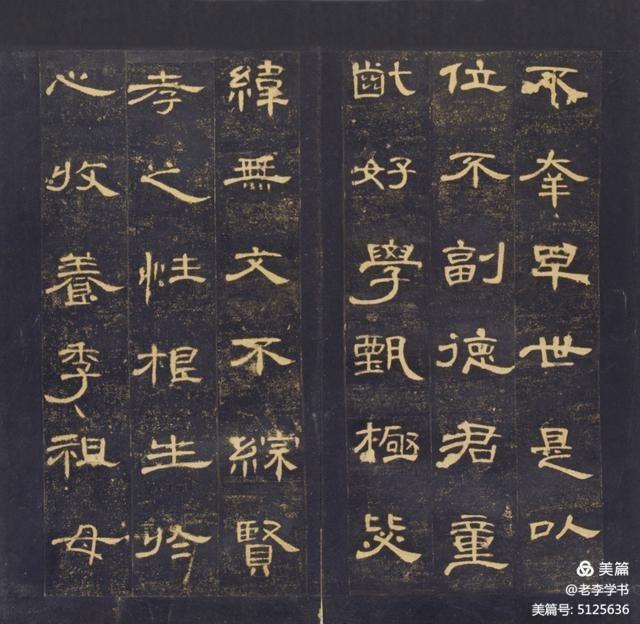
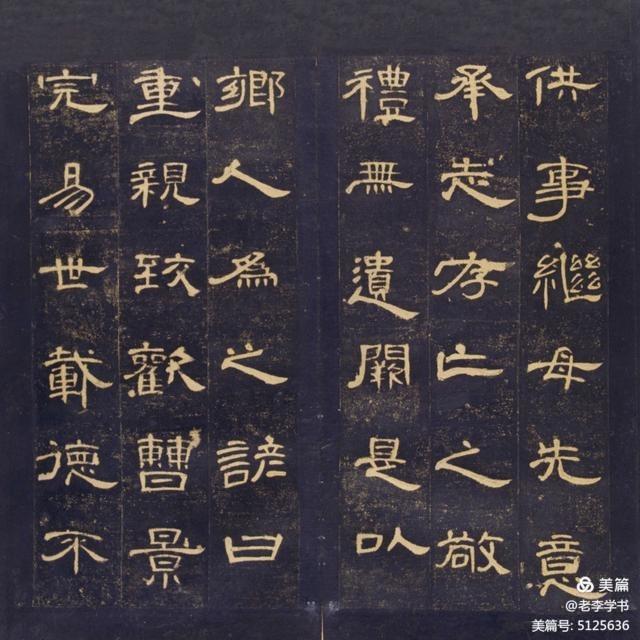
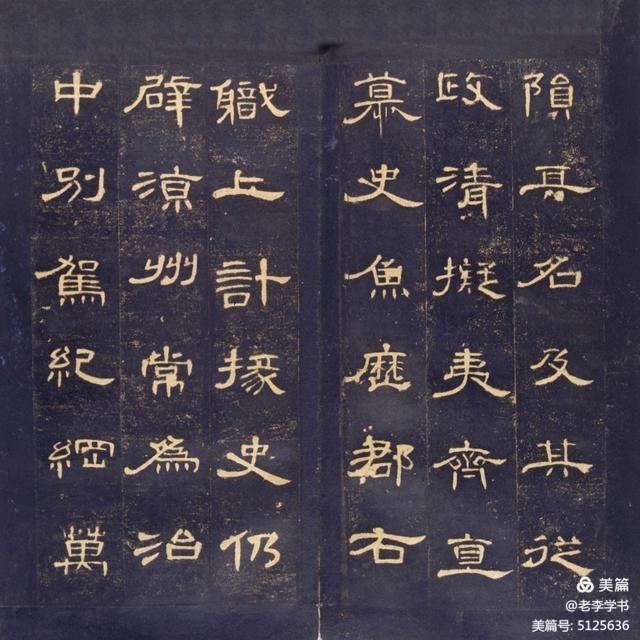

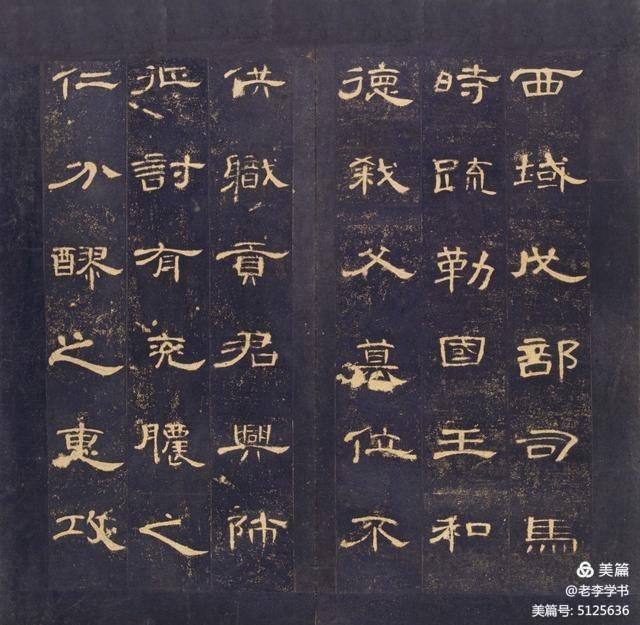

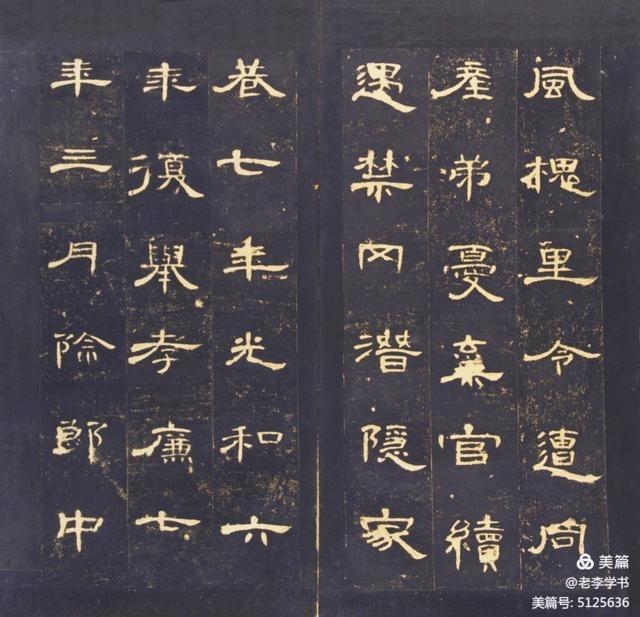
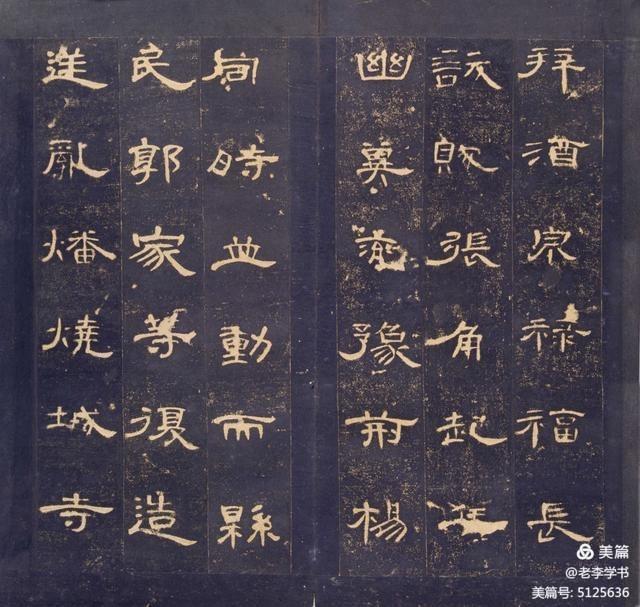

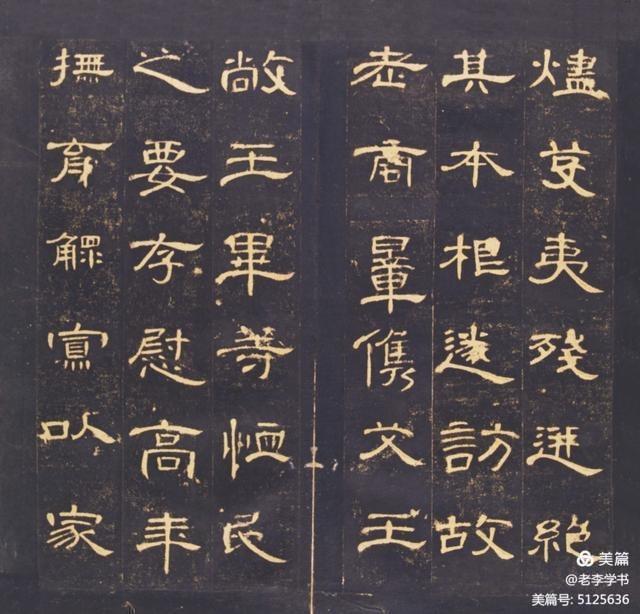

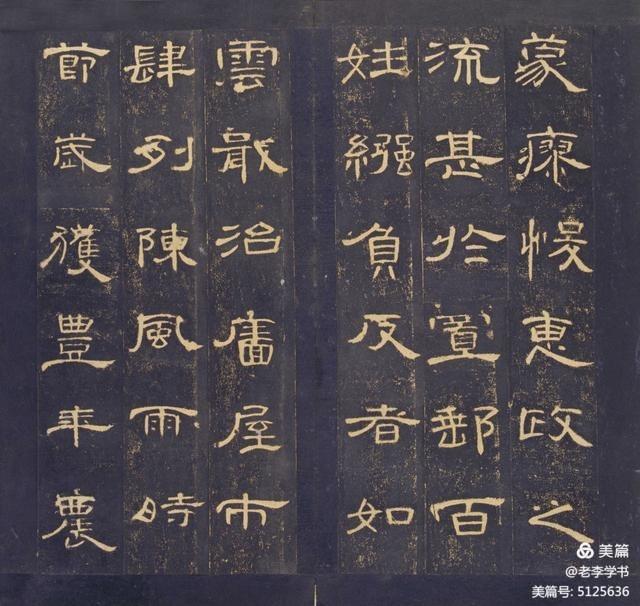


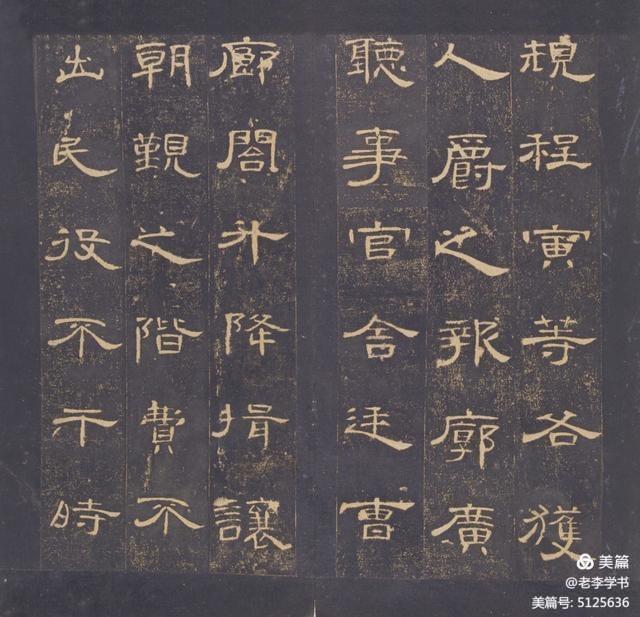
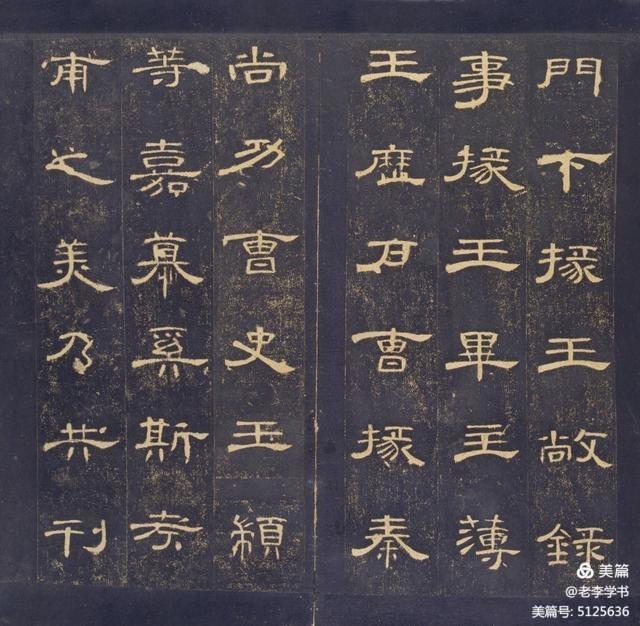
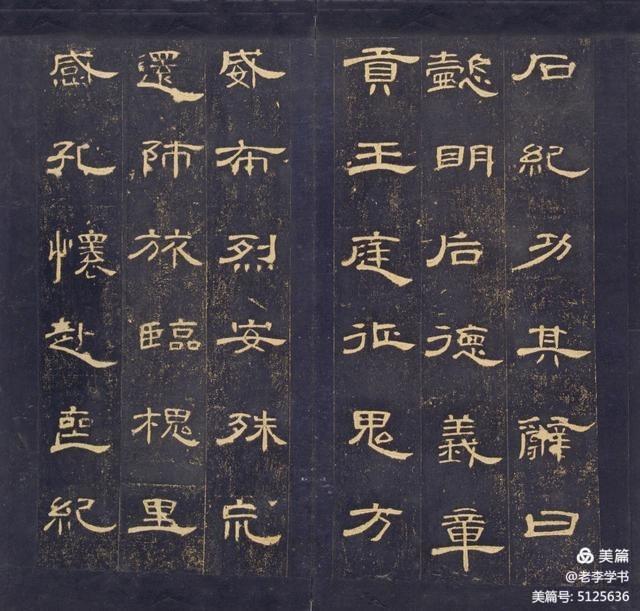

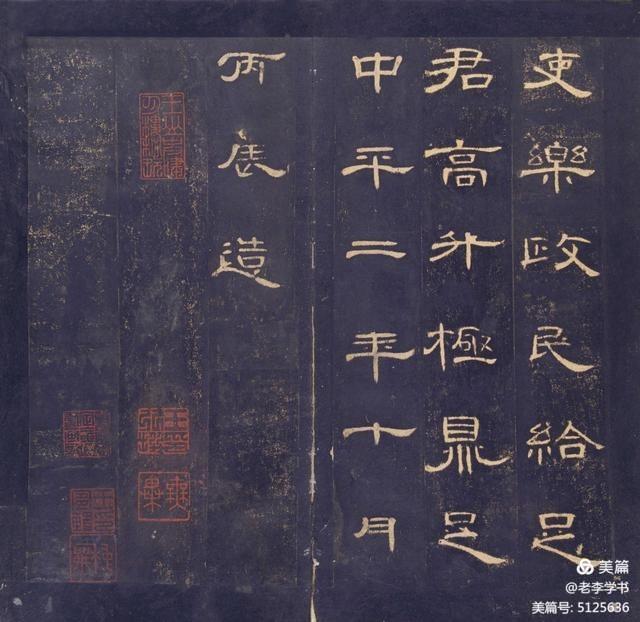
One, Cao Quanbei stippling techniques
Carefully analyze Cao Quanbei, it is not difficult to find the characteristics of its structure: No. One feature is that it mainly inherits the round pen of seal script; the second feature is that the font is beautiful, the changes are beautiful, the structure is flat, both long and short, and the spirit is flying. The third feature is that stippling, columnation and stacking are the main features, and each character is small and big different. The fourth feature is that it is generally reversed inwards and flattened out, with one character and one center, and the left and right strokes are also flat, with less modification and rejection of regular script. The technique of stippling on the stele of Cao Quan is the focus of learning in the post. Through study, I summarize as follows:
The first question is about the horizontal writing. Main pen, only one main horizontal pen is allowed in a character. At this time, the horizontal main pen forms a silkworm head and swallow tail. Generally, the pen is reversed up or down. After reaching the middle, press down and then up to form waves. The main pen should be thick and thick at the bottom, able to carry the entire font. The upper part of the secondary pen is generally straight and short or slightly curved. The horizontal pen and the secondary pen in the middle should be a link between the past and the future, echoing back and forth. In particular, it takes care of the main pen to form colors, and it is not easy to write too long, and it cannot exceed the main pen. Unlike other inscriptions, most of the secondary pens on the horizontal of Cao Quan's stele are arranged in an upward curve.
The characters on Cao Quanbei are flat, so the horizontal writing is colorful shape. I have concluded that there are no more than three situations: nailing the word horizontally, wave picking horizontally, and carrying the pole horizontally.
After careful understanding, Cao Quanbei’s external extension is good word key. I have concluded that there are six situations that should be paid attention to when writing. Let me talk about three kinds first: Ge Na, Xin Na, and Go Na.

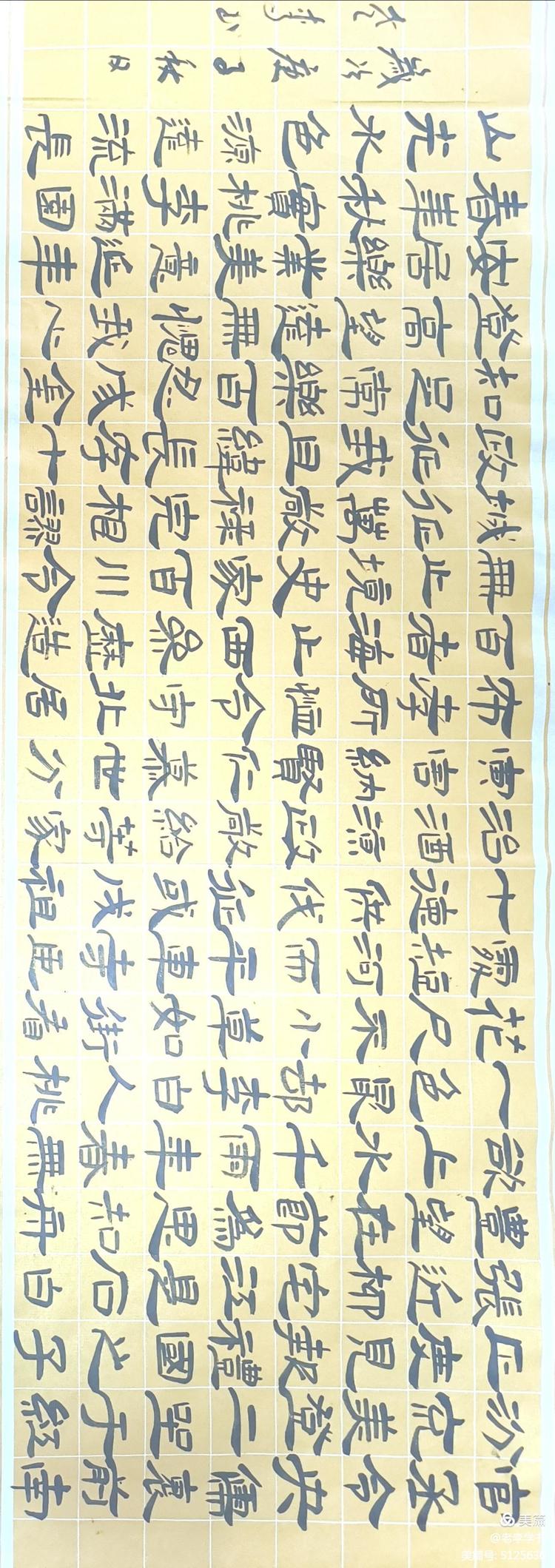
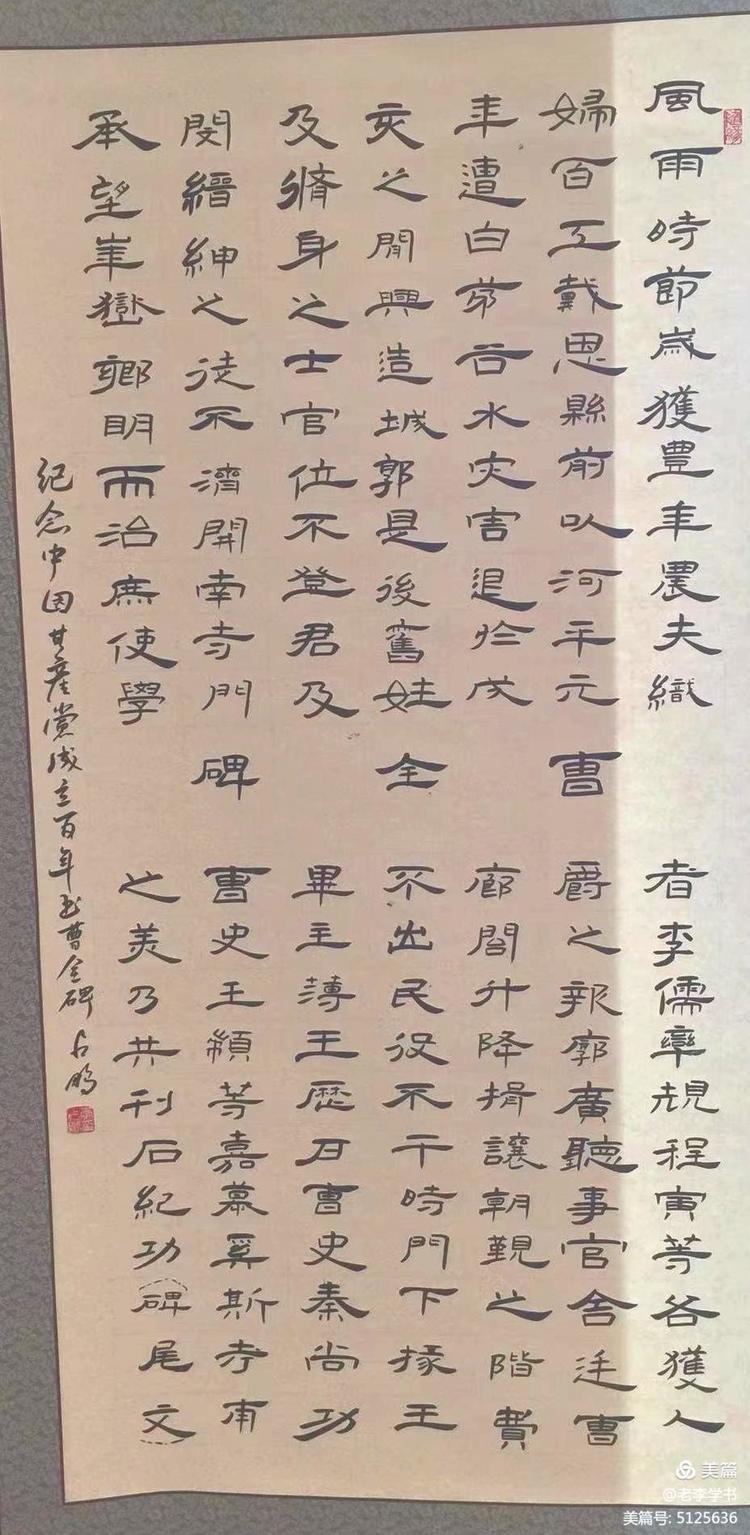
Cao Quanbei's other three situations are also difficult to deal with: ordinary Na (human Na eight Na) generally lower Na, fork Na.
The second problem is the vertical writing. There are three kinds of vertical pen writing: one is the center long vertical. It is generally expressed in the form of drooping dew, but it is different from the drooping dew of regular script. It is not particularly straight and sharp, but more subtle and sluggish. The Tibetan front goes in reverse, the center goes straight down, and the front returns to close the pen. The second is to bend the tail vertically. The shape is like an animal bending its tail to the right, as if bending its tail vertically and retracting the pen. The third is pointed tail vertical. Generally, it is not vertical in the center, shaped like a round head with a pointed tail, top-heavy, starting with the pen against the front, and ending with the front.
The third question is the writing method of Cao Quanbei official script. There are four main types. The first type: long write. Long strokes are different from those in regular script, and the strokes should be gradually increased after the strokes are made. Return to the end and draw back the pen to form a thick stroke. At the same time, it is necessary to maintain the overall balance of the word with the right part. The second type: short write. The writing method of short cursive is similar to that of long cursive, but there are differences in length. There are many changes in the form of short skimming, which can produce round tail skimming, square tail skimming and so on. Although the form is different. But the brushwork techniques used are the same. The third vertical bend. When writing, first move the brush vertically, and then bend in a large arc in the middle and back sections. When receiving the pen, use the return stroke or gently withdraw it. The fourth type: bend the head. Start writing in different directions, and then change the direction. When closing the pen, press it back for a while, and then stir it up to the left.
The fourth question is the brushwork. It mainly includes four types: the first one is oblique pressing. The starting strokes are reversed and thin, with a large slope, and the horizontal strokes should be shortened while taking into account them. The second type is calm down. Similar to Slant Na, it is flat, with a small silkworm head, and it is also used as the main stroke. The third type is heart suppression. The crouching hook is like a heart, not in a hurry and disadvantageous, and the front is thick when it comes out slowly, and the slope is not too big. The fourth type is Ge Na. Just like the character Ge, Ge Gou should be written as Ge Na in the official script, and there is no rush and disadvantage, and it is thick and thick when it is slow.
The technique of the fifth question point. There are seven main manifestations, one is the vertical point. The Tibetan front enters in reverse and starts the pen, turns the front downward, and then stops the front to close the pen, showing a shape of up big and down small. The second is flat. Hidden front reverses and starts writing, turns back and turns to the right to reveal the front. The third is skimming. When the pen is written, the front is hidden, the pen is folded and pressed to the right, and the front is turned to the left and the front is lowered. The fourth is the horizontal point. In fact, official script often has dots on the upper horizontal, which are called horizontal dots. Parallel to the right, retract the front. Five is three points, also known as vertical three points. In fact, it is uniform three-point water discharged vertically, generally small, medium, long and bottom to the right. Six is three points horizontally. Arranged from right to right, the middle point is small, the right point is protruded, the three points are balanced, and the spacing can be set as required. Seven is four o'clock. Generally, the bottoms are evenly arranged, with different sizes, with two points on the left and right protruding, and the middle is slender and downward.
There are four special cases of stippling on the sixth Cao Quan stele: one is vertical fold. The vertical drawing faces inward and the horizontal drawing connects to the left, running parallel or upward, which is easy and fast. The second is bending. Hidden front rises, like a bow and round to nature. The third is vertical folding (not vertical bending). Generally, circles are rare and squares are more common, and there are also squares on the outside and circles on the inside. The fourth is the horizontal bending hook. Two parts, horizontal fold and hook. Because the character needs to determine the length of the horizontal, the hook bends inward and converges, and the wave hook can go up and down as you like.
About Cao Quanbei’s stippling techniques, we have learned six item content. Re-emphasize several issues that should be paid attention to in the temporary post: one is to pay attention to the balance of the structure of the words. Cao Quan steles are all of the same height at the top, with a balanced center of gravity, and the vertical inscriptions are beautiful, which is also the general rule of official script. Therefore, no matter heavy brush or wave pick, you should pay attention to the balance between left and right. The second is to pay attention to returning the pen and rejecting regularization. For example, characters such as "de" are different from the writing rules of regular script, and use the back pen. Another example is the horizontal and vertical strokes, the writing method is almost completely different from the regular script, and it cannot be written like a regular script. The third is to master the pressure pen and change it in time. There are many pressed pens and gradually heavy pens in official script, which need to be learned and practiced frequently, and it is not a day's work. If you do not master the essentials, you will inevitably lose the central strokes and abuse the side strokes, and the strokes will lose their luster. In addition, some characters also change according to the characters. For example, when the word "口" is formed, there are openings, closing ones, pressing the pen on the right, and picking the pen on the right, etc., which need to be experienced in the pre-practice. When the book is used, there will be little hatred, and it is not difficult to know what is going on. Prompt posting is also a gradual process of observing the pre-practice and then observing the pre-practice.
Before learning Cao Quanbei, some characters need to be practiced repeatedly, like Xingkai , such as "Bu", "History", "Yi", "De" and other characters, the changes of practicing waves, balancing, posture and writing. There is a jingle that explains the problem very well: look at the waves on the cloth, and find the balance in the history. Although Yi has a strange physique, he has infinite virtue and high learning!

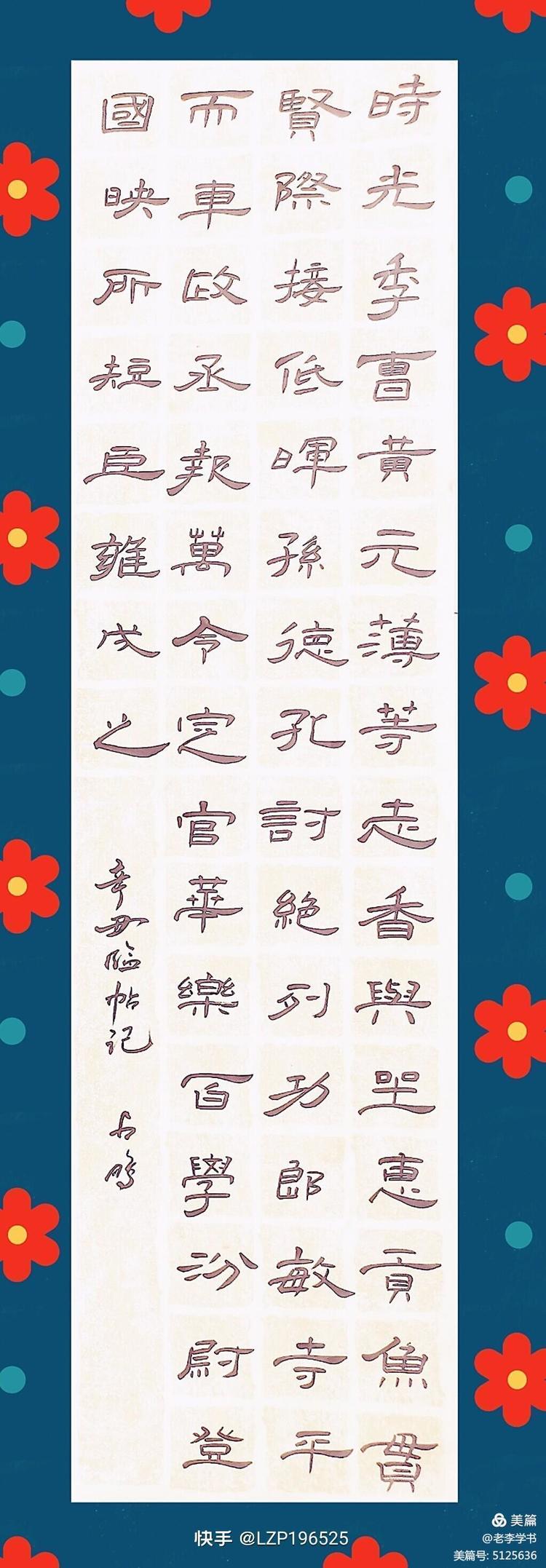
Second, Cao Quanbei radicals and radical features
Chinese characters were called ancient characters before seal script, and were called modern characters after official script . It can be said that starting from official script, the radical form of regular script has been basically established. Because it evolved from seal script, official script often still retains some characteristics of seal script in certain structures. The following is an example of the radicals in "Cao Quanbei" for analysis and explanation.
side by side
The biggest difference between the single and double side in official script is that the vertical picture next to the double For the curved tail vertical. The first strokes next to a single person are written from left to right like a sharp point, and the first strokes next to a double person are mostly sharp points.
Soil, Geban
When the soil is used as the left side, it is slightly to the upper right side, horizontally drawn left and right Virtual, the purpose is to echo the right half structure. Adding dots between horizontal strokes is a customary way of writing in official script. It can be seen from the word examples that "Ge" has a primary and secondary structure in the structure. For example, the oblique Na in characters such as or, Cheng, Xian, and Wu are all very prominent, while the oblique Na in characters such as Zhan, Zhi, and Kill also have perfect shapes, but their postures are all restrained. The morphological changes of Na paintings in the Cao Quan stele are extremely rich, especially the second half and the part of the brushwork, which should be distinguished during temporary practice.
He, Shi, Niubang
The characteristics of these radicals are relatively similar: the center of gravity of the structure is slightly higher, and the body posture is slightly Turn to the right side, use the pen to make the left solid and the right virtual. The vertical paintings in these kinds of radicals have different changes. The hanging needles are like the characters of Zu and Shen, and the hanging needles are like the characters of Cheng and Te. Other characters also have sharp or round changes.
Wood, border
When used as the left side, the stroke is weakened like a dot, while the stroke is still The potential of exertion is common in forms such as Yang, Huai, Olive and other characters. There are not many changes that are close to long strokes like vain and phase. Mu Zaixia develops horizontal painting, and the left and right strokes are weakened into dots. The similar handles are mainly manifested in the vertical bending of the tail, sometimes with greater exaggeration, so as to echo symmetrically with the sweeping paintings in the structure on the right, such as tuck and support.
冫、氵依
The three points are evenly distributed, the direction is radial, and the shape of each point changes slightly , while the midpoint is slightly longer. Most of the three points of water in Cao Quan's stele are sideways, so the three points are all inclined upwards in the radial combination.
攵, female side
Inversion text generally only occupies half or less than half of the font structure. Therefore, the painting of 把捺 has different degrees of restraint in terms of body posture. Among the teasing paintings, the painting selection is slightly dominant, and its performance is slightly stronger. Compared with the single female character, it can be seen that when female is used as a radical, the main strokes are weakened and convergent. Note that the horizontal strokes are roughly divided into two oblique folds.
Silkside
In the official script, there is a strong seal script feature beside the reel. Especially in the upper part, it is almost the same as seal script, except that it is slightly square-folded, and it is generally written in three strokes. The lower three points next to the twisted silk in the Cao Quan stele have changed a lot, mainly determined according to the structure of the right half. Large, the three points will be extended accordingly, so that the left and right structures are balanced.
beside the ears and chin
The shapes of the left and right ears are roughly the same, and the right side is wider because of the The shape is slightly larger. When practicing folding pictures by the ears, first write in two strokes (such as Xie, Jiao), and after you are proficient, you can pick up the pen and write it in one stroke. The vertical painting next to the left ear is generally slightly longer.
Sidenote
Except for the short first horizontal line beside the words, the other three horizontal lines are roughly similar . With the pen, the left side is solid and the right side is empty, and the shape is slightly to the upper right side. In some glyphs, as a symmetrical response to the side of the speech part, the structure of the right half is slightly inclined downward to the right, and the entire glyph is in the shape of a capsized boat, such as the characters of visit, harmony, and absurd.
Grass, bamboo side
Grass heads and bamboo heads are often mixed together in official script, but generally It is written as Caotou, such as Jie, etc. were originally bamboo heads, and they are all written as Caotou in the stele. If the underlying structure does not change, the grass head is written as the main pen horizontally, such as Mao and Jing. On the contrary, it is not exaggerated. Ai, Mu, Meng, etc., the grass head of Wanzi in the word examples still uses the structure of seal script.
Beside
From the shape point of view, there are two sides of the hijab: straight down and inward. kind of change. The shape of adduction is generally used in fonts whose lower structure plays left and right, such as An, Jia, etc., the apex is centered, and the sharp point is slightly protruded.
Heartside
When the heart is at the bottom of the character, the two points inside the heart are smaller in size but have For mood changes, the two points come out flat, Ruyi and Forbearance; the two points echo Ruzhi and Xi. The sense word is played by the Ge Department, and the Heart Department is next. When the heart is on the left side, all strokes become vertical, and its shape is simplified from seal script. The short paintings on both sides of the long and vertical ones have uneven changes, and the whites are basically uniform with each other.
wide, dead, next to the door
Guang and Shi are very similar in body posture when they are sideways, and they all use curved tails Play vertically to the left, and the left vertical of the door character changes to a curved tail. Pay attention to the symmetry of the left and right, and the uniform whitening of the internal structure.
Side, beside
There is no qualitative standard for the "dot" next to the character in official script, or two Dots or three dots in Cao Quanbei seems to be three dots for complex structures, two dots for simple structures, such as near, narration, and extension, and three dots for character lengths. In short, other radicals should be covered. The point placement is in harmony with the overall structure, but the structural center of gravity of the characters cannot be shifted because of this.
Mountain, beside the bottom of four points
When the mountain character is used as a single character, it takes the shape of a capsized boat, and when it is used as a radical below The posture is flat, the center of gravity is raised when left, and the changes are regular. And the four-point base is evenly distributed, and has many fronts and angles, so it can also be written as the base of fire.
Create


Third, the structural characteristics of Cao Quan stele frame
The frame structure refers to the ratio of the size of each part of a Chinese character And the combination of Chinese characters and their rules. Cao Quan's stele has a strong sense of seal script, with an unrestrained posture and introverted brushwork. The main brush is wavy, with a silkworm head and swallow tail, drawn left and right, with a dynamic balance. The frame structure in between is worth studying.
horizontally long and vertically short.
Compared with regular script, the ratio of horizontal length to vertical length is exactly the opposite of official script. The length here refers to the vertical and horizontal relationship of all strokes, not just a single stroke
horizontal and vertical.
General regular script and running script are horizontal and upward, while official script is horizontal and vertical , all flat and stable, giving people the beauty of manners.
is flat.
The layout is symmetrical and symmetrical, showing the trend of flattening, up and down Small and left and right are about multiples of up and down.
Stretch left and right.
Exhibited in a long wave picking, long skimming, big pressing, flat and round, Longer than other pens
Left short and right long.
Generally, the right part is the main part, the left part is short and short, the top is neat, and the bottom and right are full Performance. The sixth feature: tighten up and loosen down. Most of the fonts are tight at the top and loose at the bottom in a balanced shape.
If the left is sparse, the right will be dense, and if the right is sparse, the left will be dense. This point focuses on the emphasis on variety and variety, not making the characters rigid.
Stand by character.
Most of the fonts are flat, but there are also square ones, and flat squares are the main ones. Of course, there are also long ones, even oblique ones, which are naturally generated, have different shapes, and are shaped by characters.
Take the momentum to the back.
Cao Ti single-body characters are flexible and changeable, and the left and right structured characters have opposite sides, Opposite or in the same direction.
Override bearer.
In the stele, try to cover the bottom by the sides, like official characters. Some are lighter at the top and heavier at the bottom, and the main pen at the bottom is long and heavy to form the core, supporting the font, such as straight characters.
Create exhibition


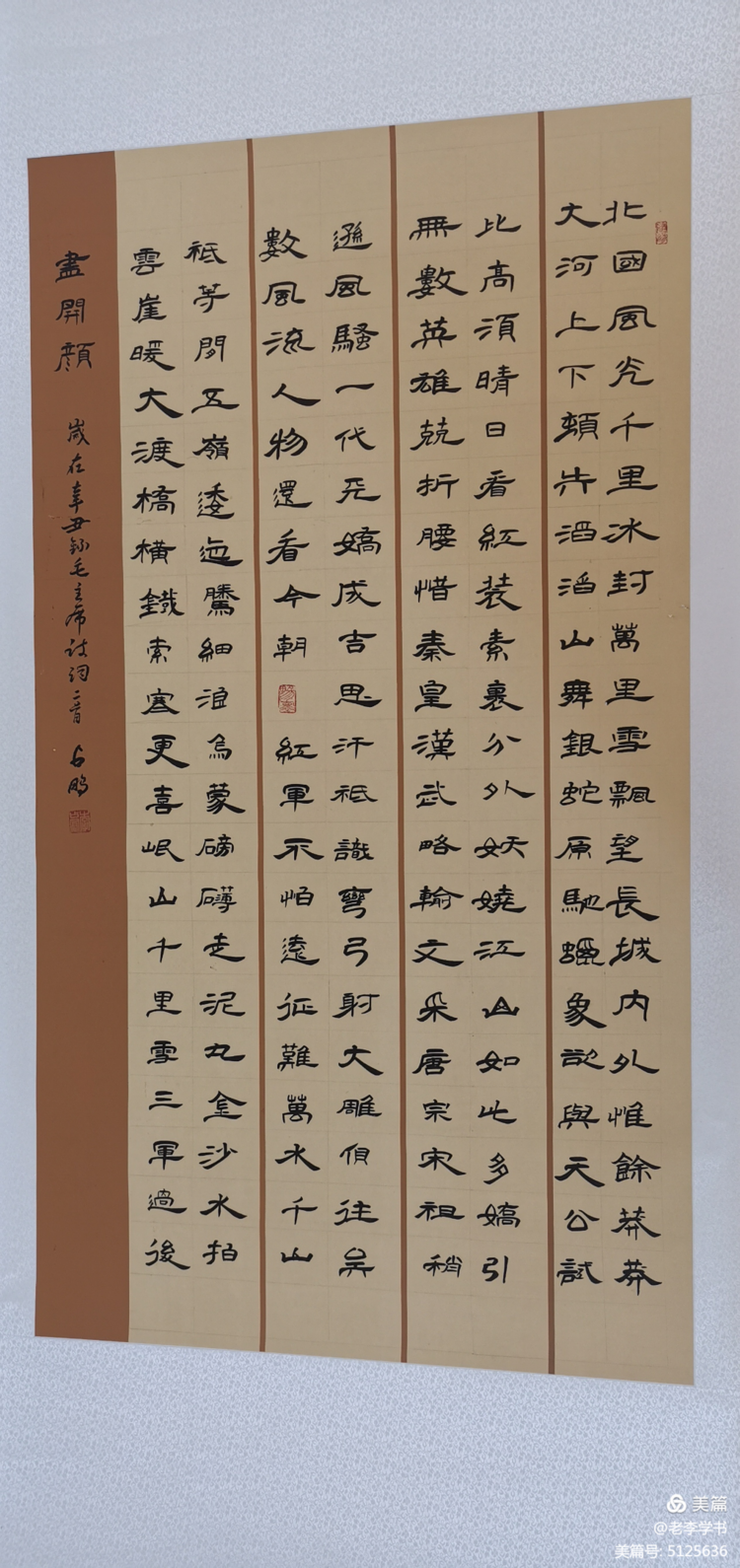


Enlarge word by word, try to figure it out












The above analyzes the three characteristics of Cao Quanbei, and learned Cao Quanbei stippling Techniques, radicals, radicals and structural features of the frame. In fact, in calligraphy creation works, there are many problems involving the same character, so it is necessary to change the same character and change the same character to avoid rigidity and singleness. For the convenience of everyone's digestion, I have summarized the characteristics of Cao Quanbei's structure and writing style into four-character and six-sentence jingles for easy memory and digestion:
The official is like Tai Chi, and the pen is in the center.
The writing is against the front, but the direction is different.
Silkworm head swallow tail, knot body flat.
The upper cover and the lower support are balanced left and right.
Wide and wide, tight at the top and loose at the bottom.
The pen is in place, different from Kaixing!
(Analysis of Cao Quanbei and stippling techniques of Cao Quanbei, interpretation of radicals and radicals For example and the characteristics of the frame structure, etc., I have referred to many documents about official script such as Mingyi Online, and absorbed many viewpoints of Mr. Shi Zhiwei of Beijing Sport University's "Han Li Cao Quan Stele", hereby thank you!)
Articles are uploaded by users and are for non-commercial browsing only. Posted by: Lomu, please indicate the source: https://www.daogebangong.com/en/articles/detail/Introduction%20to%20Calligraphy%20Lectures%20Official%20Script%20Analysis%20of%20Cao%20Quans%20Monument.html

 支付宝扫一扫
支付宝扫一扫 
评论列表(196条)
测试